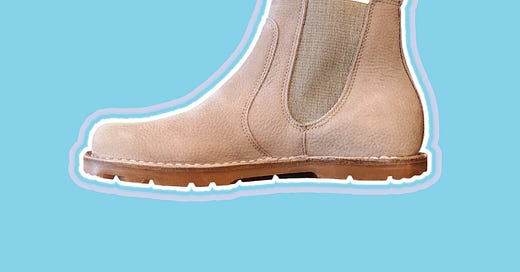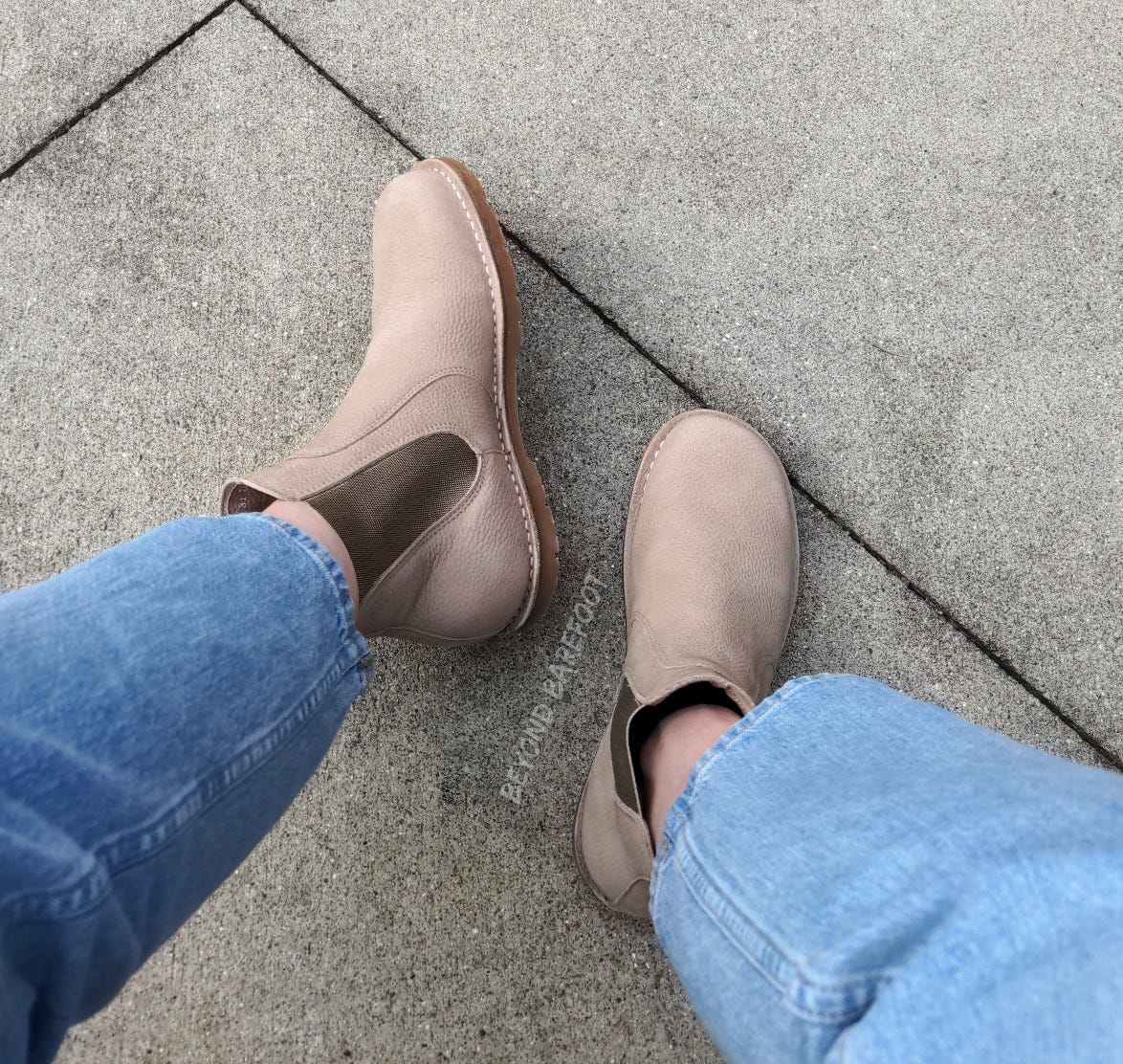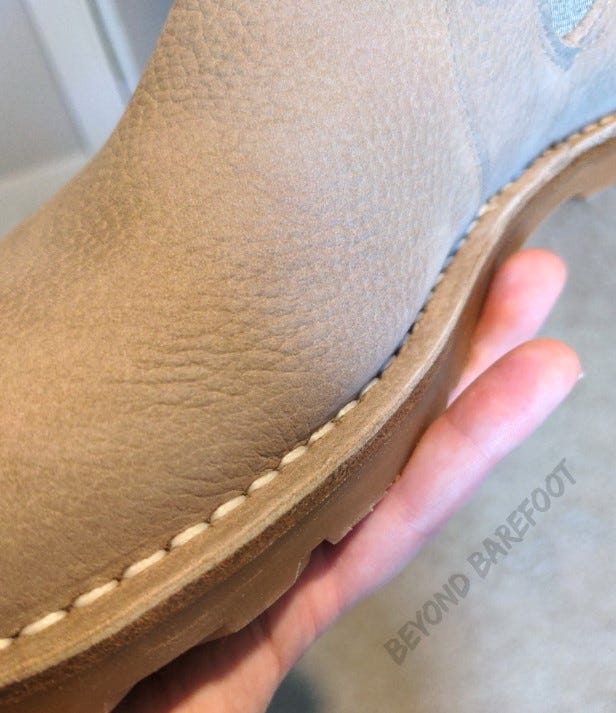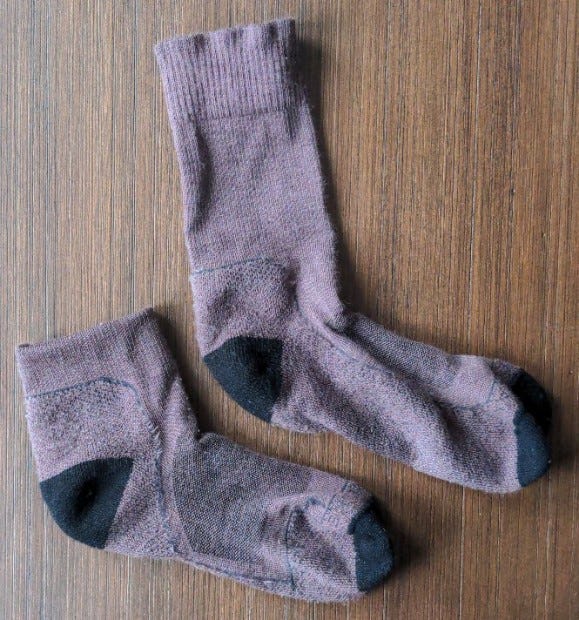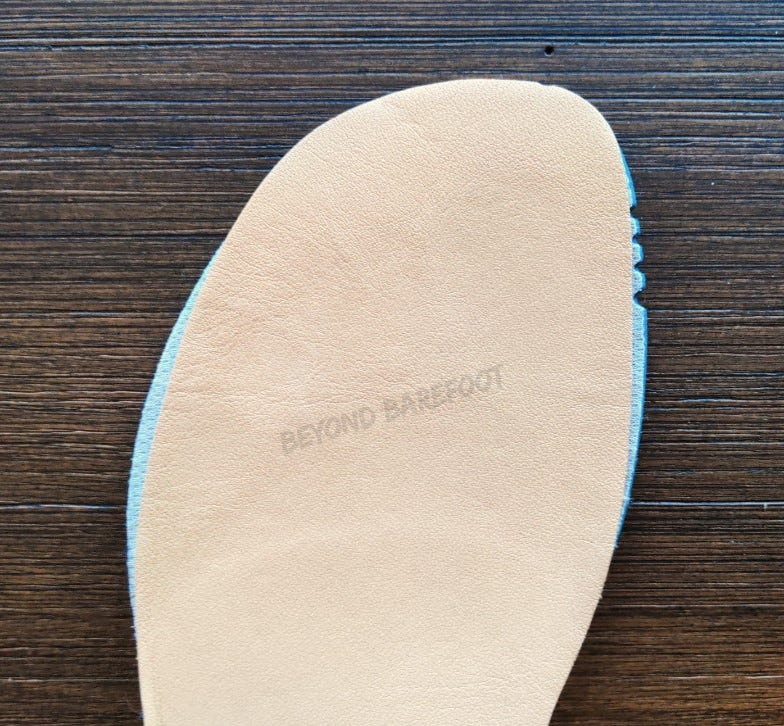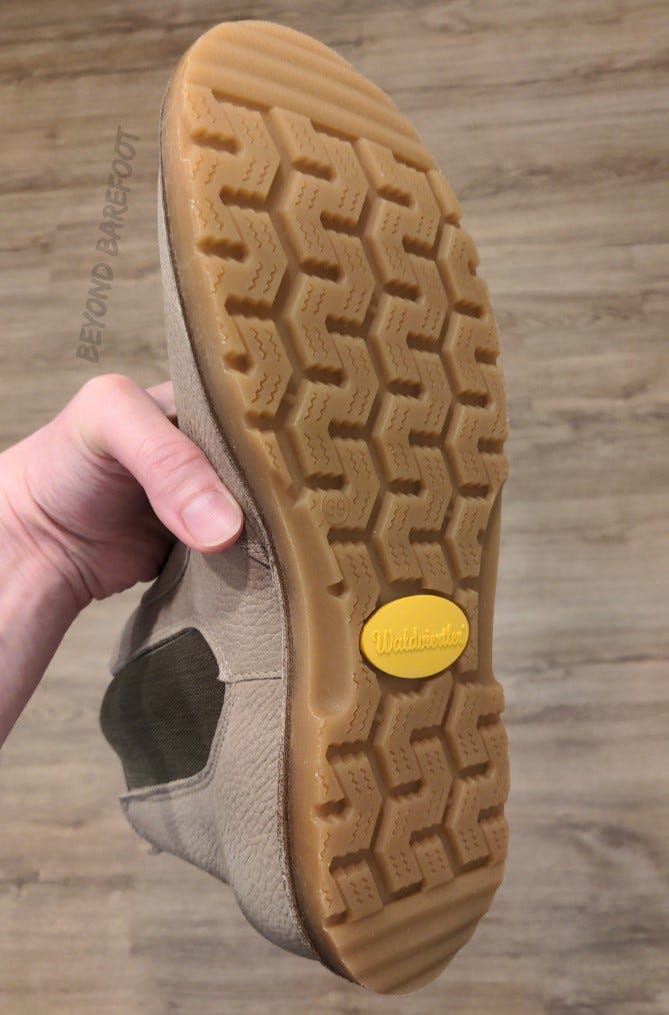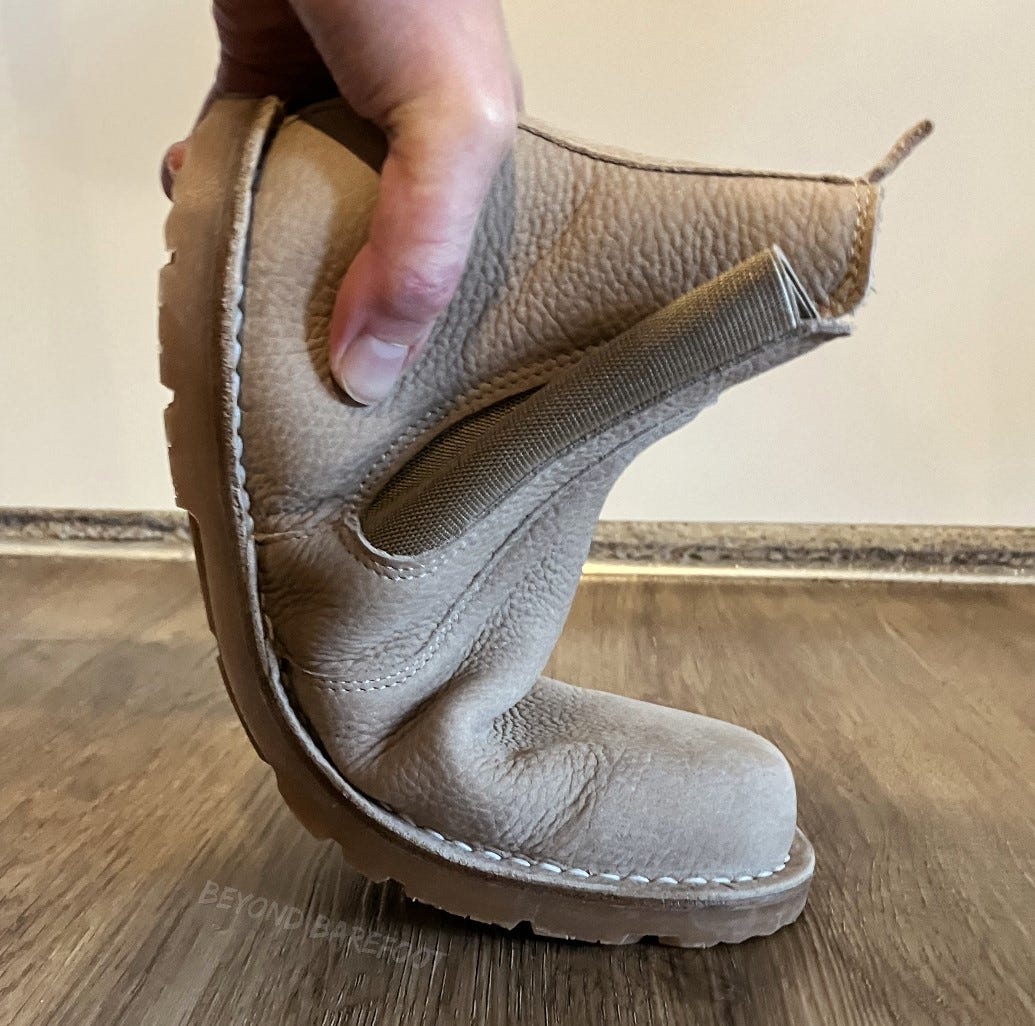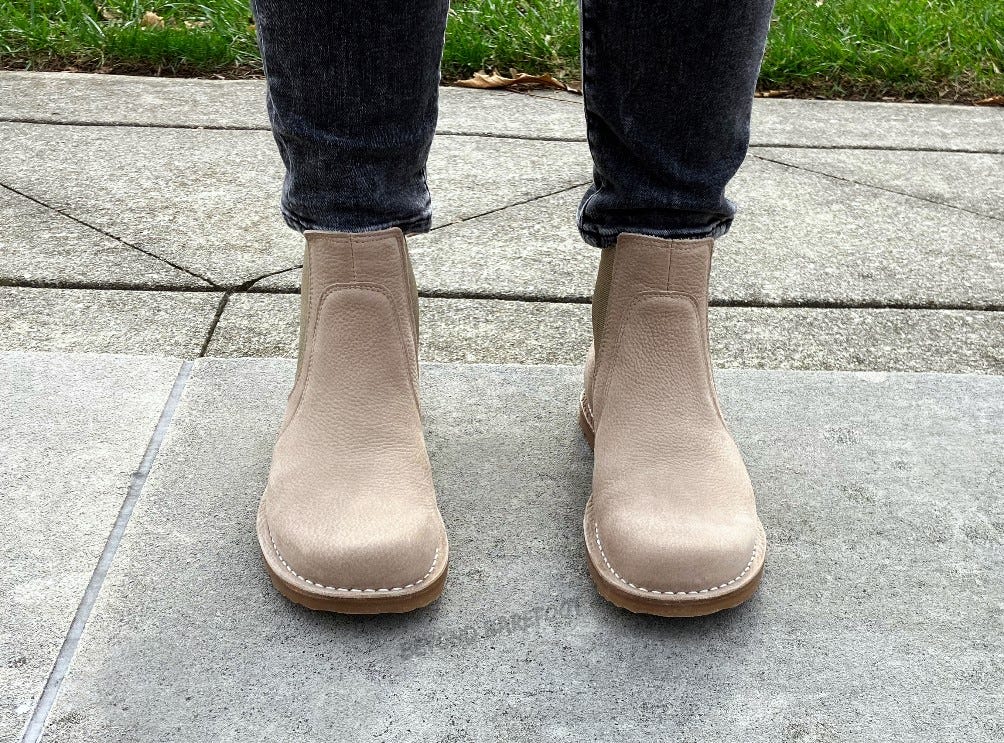(Note: I paid for these boots out of pocket and am not receiving any form of compensation for this review.)
GEA Waldviertler has been making high-quality footwear in their Austrian workshop since the 1980’s. The company specializes in footwear that’s similar in many ways to barefoot shoes1 but the soles are much thicker than you’ll find on a typical barefoot shoe.
As someone who can’t wear barefoot shoes but values toe room, I was so excited when I first learned about this brand. After having worn the Waldviertler Aufwind sneakers for a few months, I knew I wanted to try their boots but was stuck debating the specific model. I initially considered the Jaga Flex or Bronca, but when Waldviertler released the Mustang Chelsea in a tan color, it was love at first sight.
Ordering experience
There are currently no Waldviertler distributors in the US, so the ordering process isn’t super straightforward. The company’s website doesn’t have the option to ship to the US, but you can place an order by emailing them directly. The downside here is they only accept payment via wire transfer, which can be a bit of a headache to set up and add to the total cost.
I ended up ordering through the German retailer Mbaetz. The price was marked up a little, but since Mbaetz takes credit cards and PayPal it actually cost less than it would have with a wire transfer. The Mbaetz website ships to the US but they didn’t have the model I wanted, so the boots had to be special ordered. Keep in mind they don’t take returns on special orders.
Everything went pretty smoothly and I received my boots about three weeks after I paid. Mbaetz has awesome customer service. They were very upfront in telling me that previous customers were not happy with the Bronca boots because they were very stiff and difficult to break in, advising me to pick a different model. I really appreciated their honesty.
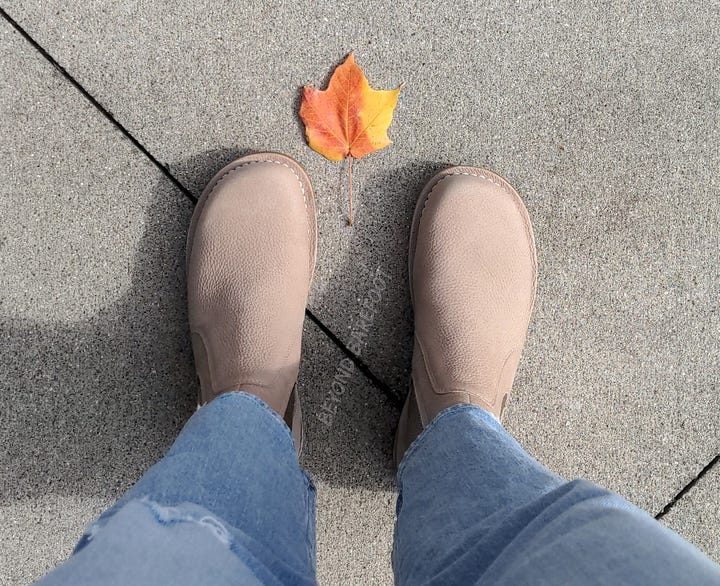
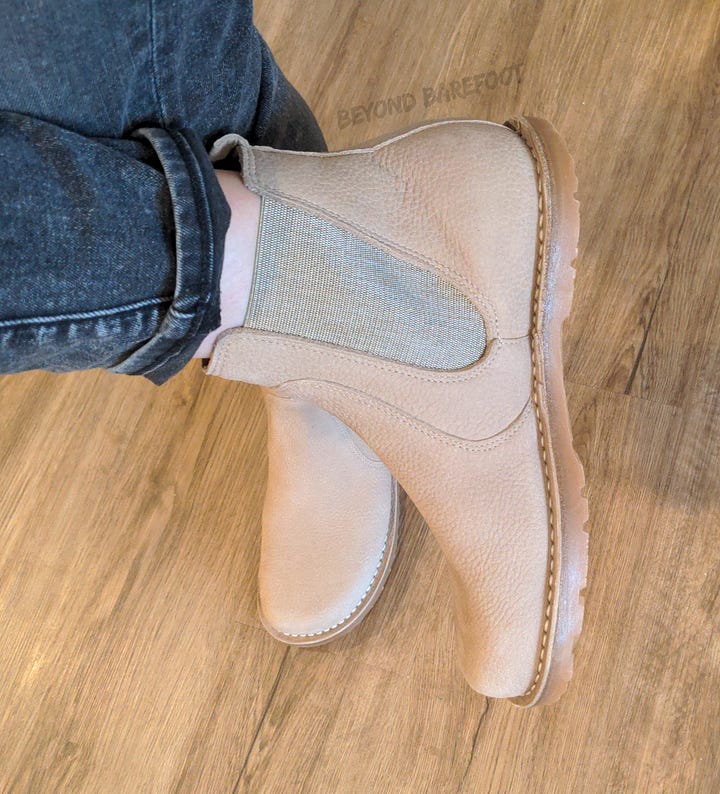
Construction & materials
Overall, the boots are well-made and sturdy. The upper is cowhide leather and the lining appears to be vegetable tanned leather. The Waldviertler website says the upper is water-repellent but I haven’t tested this.
Most Waldviertler boots are made using the stitchdown method, a resoleable construction that’s much more flexible than a Goodyear welt. The outsole is TPU rubber, which is meant to be slip- and puncture-resistant. I expected the soles to feel rubbery and have a bit of squish to them, but they’re rather firm, with an almost plasticky feel.
Sizing & fit
Waldviertler offers multiple widths on several models. “F” is their average width for women’s shoes, which is equivalent to US “EE.” In the US, the standard width is “B” for women and “D” for men. I’ve found Waldviertler’s sizing chart to be pretty accurate, which you can view here. The measurements list the actual shoe lengths, not foot length. If you’re not sure what size or width you need, it might be helpful to look for a used pair off eBay, Poshmark, or Mercari first.
My feet are about 24cm long and 9.5cm wide and I ordered the Mustang boots in size 39F. They’re just about right lengthwise but were pretty snug across my forefoot in the beginning. I could feel the side of the boot pressing on my pinky toes, but the leather has since started to stretch and mold to my feet.
I have combination feet, meaning my forefoot is a lot wider than my heel. If I’d gone with a wider width, the toe box would have been more roomy but then they’d be far too loose around my ankles, because wider widths increase both in the toe box and in the heel. As it is, the boots are slightly big around my ankles. This is the tricky thing about Chelsea boots and other kinds of pull-on footwear, because there aren’t any laces to easily adjust the fit.
What I’ve been doing is wearing a pair of long socks, folded over and doubled up to add bulk around my ankles. That’s been working pretty well so far.
Comparison to other footwear
Although I got the same size and width in both of my Waldviertler shoes, the Mustang has less space above the forefoot than the Aufwind sneakers. This might simply be because I got the Aufwind used so they’re more broken in, or it might be the case that Waldviertler uses a last with a snugger fit for their Chelsea boots.
The Mustang is similar in length to the Lems Boulder boots I own (women’s size 9.5), but they’re definitely narrower. The Lems are actually too roomy for me. My feet feel like they’re swimming in them so I never wear them.
Zero drop aspect
Most Waldviertler footwear is constructed to be completely flat inside but the footbed has a slight heel lift (about 5mm). In some models the footbed can be easily removed and swapped for a flat one, but in other models the footbed is glued down. I’ve seen people online who ripped out the glued footbeds, but the Mustang boots came with the easily removable variety. Look for models that specify having a wechselbares Fußbett (which translates to “removable footbed”) if you don’t want the heel lift.
When I ordered them, I wasn’t 100% sure how well it would work to put a flat insole in the boots. It’s important that your heels sit in the proper place in footwear, but I actually found that my heels felt more secure and slipped less while using the flat insoles.
The boots have a very low amount of toe spring, which I don’t notice while wearing them. The sole is carved in a way that visually creates a sort of faux heel from the side.
Sole flexibility
Barefoot shoe wearers tend to prize having the most thin and flexible soles possible, but the sole really only needs to be flexible enough to allow the foot full range of motion. There’s often going to be a loss of flexibility with thicker soles.
Out of the box, the soles of the Mustang boots are fairly stiff. These aren’t the type of boots you can expect to walk several miles in right off the bat, as it takes time for the soles to break in and be completely comfortable. They’ve gained a fair amount of flexibility so far but still have a little ways to go.
It’s generally recommended to wear new boots around the house for a few days to start the breaking in process. You can speed things along by manually bending the sole by hand. If you have particularly sensitive skin it might be a good idea to bring some bandaids when you start wearing them out, as it’s not uncommon to develop blisters on your heels when the sole hasn’t broken in yet.
Aesthetics
I personally think these are the best looking zero drop Chelsea boots currently on the market. No other brand comes close to making something that looks as polished to me as these do. Most other cushioned zero drop options are on the sporty/outdoorsy side of things, which is not the style I go for most of the time.
The Mustang can be easily dressed up or down. I got the Sesam color and the elastic has a metallic sheen to it, which looks kinda cool.
In my review of the Aufwind sneakers, I mentioned I wasn’t a huge fan of the toe box shape. I think a rounder toe looks better on sneakers but the Munsony shape is more fitting for their boots.
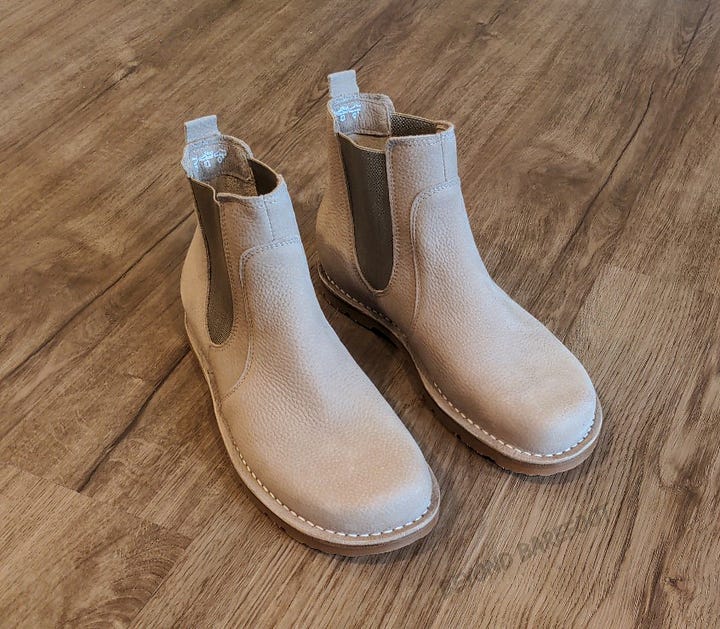
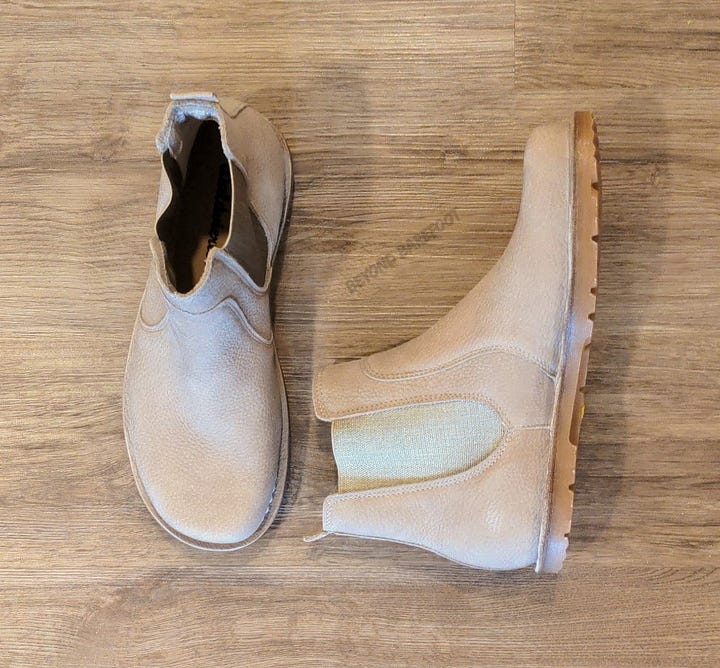
One thing that bugs me about a lot of barefoot boots is they often have cupsoles or direct-injection soles. Aside from making resoling nearly impossible, this also has a tendency to make them look kind of like leather sneaker-socks, so I appreciate that the Mustang boots look like, well, boots.
Final thoughts
The Mustang Chelseas are beautiful, durable boots that will last for years with proper care. These will be a great addition for those who want some of the benefits of barefoot shoes while still having a little distance between their feet and the ground.
I’m pretty happy with them overall; they’re very close to my ideal boot. I do wish the toe box had a bit more space at the pinky toe and the sole was more flexible from the get-go. I plan on posting an update in a few months when the boots have had more time to break in.
Because there’s so much variation in foot proportions, it’s impossible for one brand to make something that works for everyone. This particular model will be best for people who don’t have a huge difference between the width of their heel and forefoot. If you do have this type of foot, you might want to choose a style that has laces or some other means of adjustment.
Barefoot shoes are supposed to feel as close to being shoeless as possible. They’re known for having a foot-shaped toe box and soles that are very thin, flexible, and completely flat (“zero drop”).


